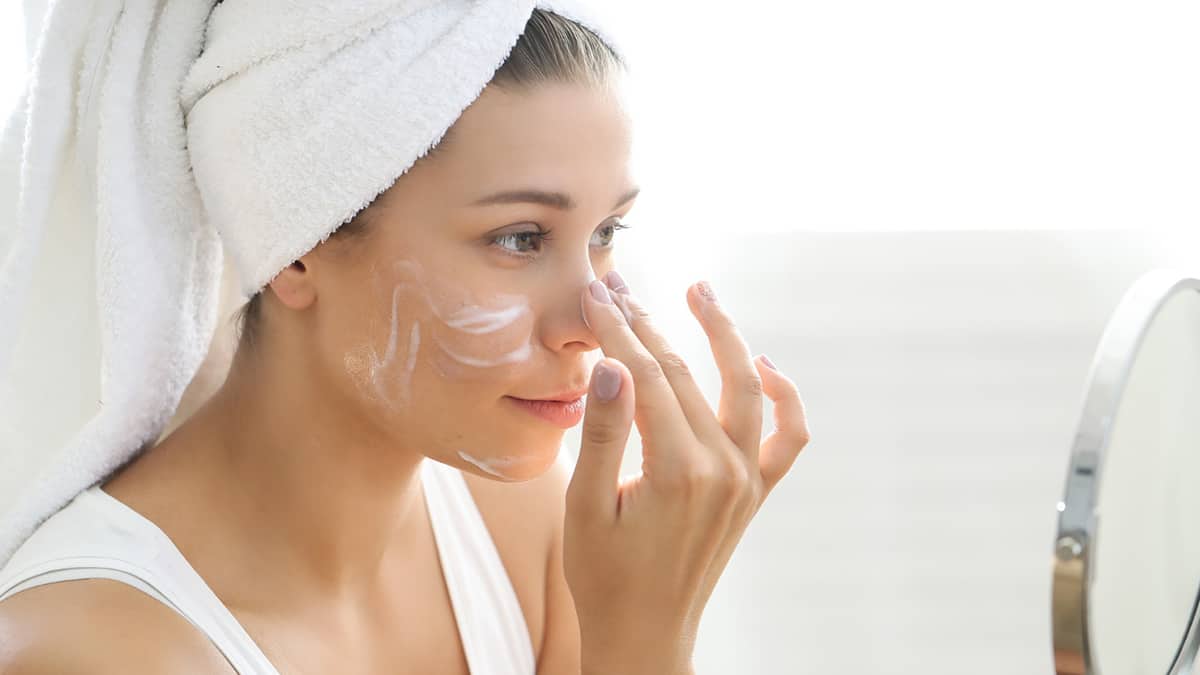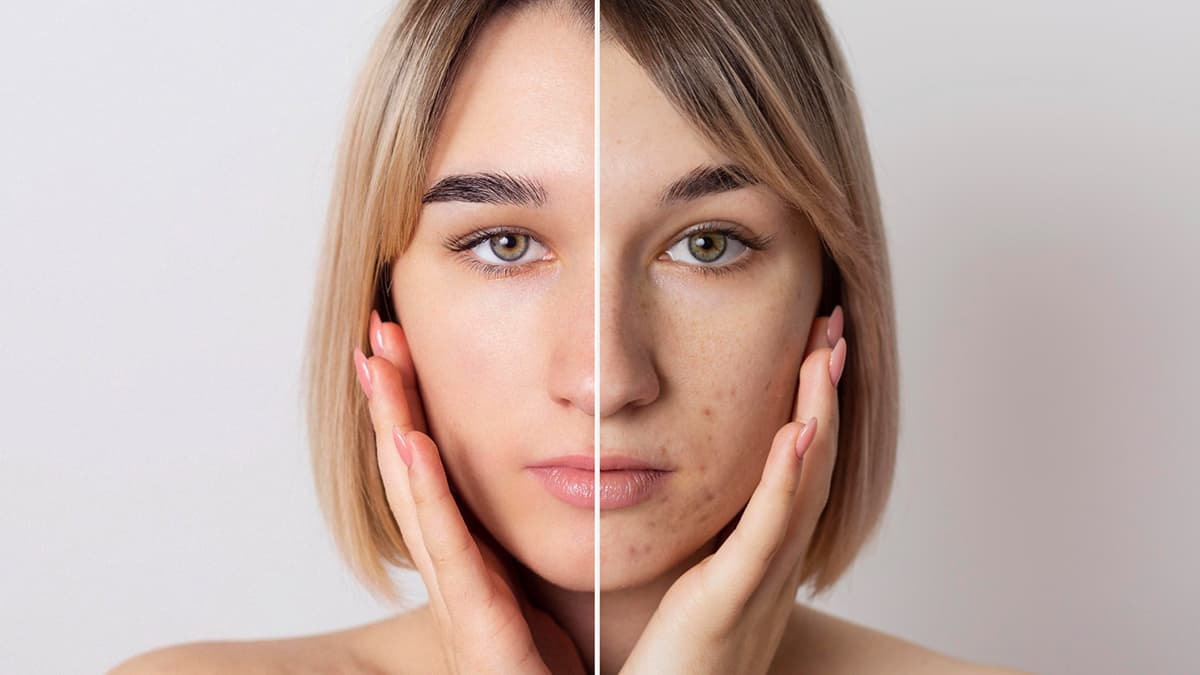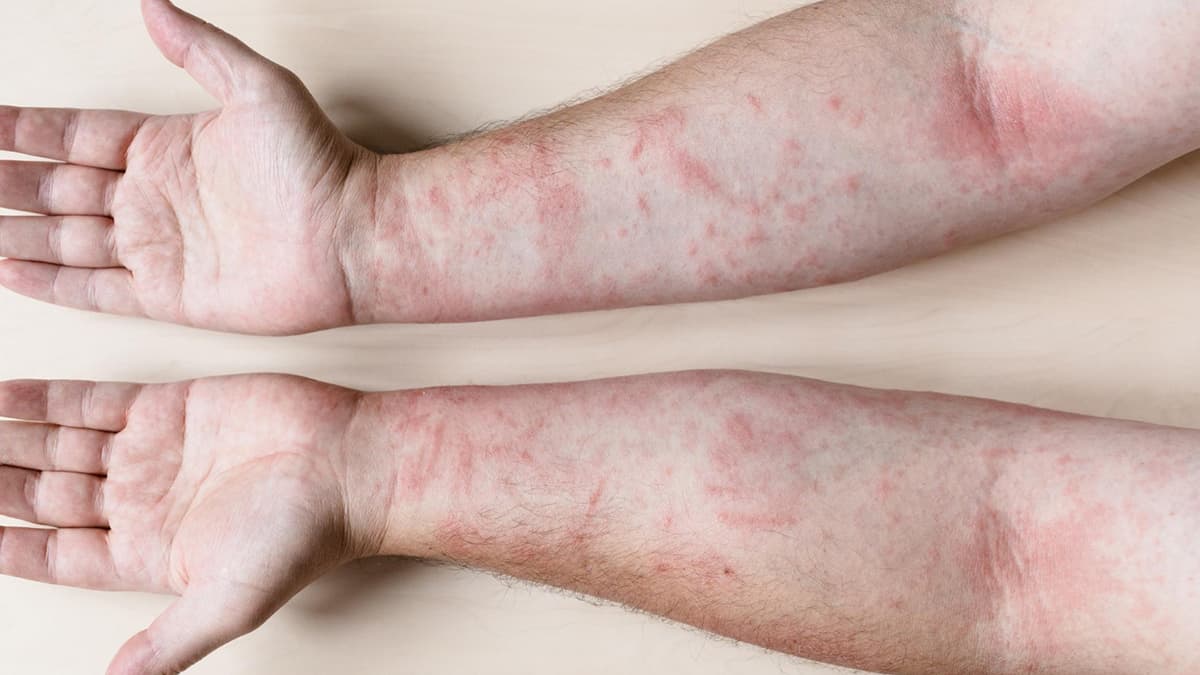Tretinoin for Anti-Aging and Acne
Physical Health

Your skin serves as an important defense against things in your environment that could harm your tissues. It can also serve as an outer reflection of your inner health and wellness. Taking care of your skin is an important part of living a healthy lifestyle that supports your well-being.
If you’re interested in developing a better skincare routine, you may not know where to start. Most of us are surrounded by advertisements for a wide range of skin products, and store shelves are overflowing with different types of lotions, creams, serums, and cleansers.
One increasingly popular product is tretinoin, which is identical to a natural molecule made by your body. This prescription medication, sold under brand names like Altreno, Renova, Retin-A, and Avita, may be used to heal and improve the appearance of your skin when you have problems caused by aging or acne.
What Is Tretinoin?
Tretinoin is another name for all-trans retinoic acid. Your body makes this substance when you eat vitamin A. Your cells need tretinoin to stay healthy.
Experts don’t yet know everything that tretinoin does or all the ways in which it works to improve your skin health. Studies have found that when tretinoin enters your skin cells, it attaches to and activates proteins called retinoic acid receptors or RARs. These proteins turn on genes that help your skin cells grow properly and form new cells.
Tretinoin may also work in other ways to keep your skin healthy. For example, tretinoin cream may help prevent skin irritation.
What Is Tretinoin Used For?
In the USA, tretinoin has approved topical (applied to the skin) forms for acne and aging-related skin damage. Topical tretinoin can be purchased as a cream, gel, or lotion. There is also an oral (taken by mouth) form of tretinoin that is approved to treat acne as well as certain types of leukemia.
Doctors may also recommend tretinoin for other off-label purposes that aren’t officially approved by the regulators. These primarily include other types of skin conditions, including:
- Stretch marks
- Psoriasis, a skin condition that occurs when your immune system attacks your skin
- Skin warts
- Certain genetic disorders that affect the skin
- Certain types of skin cancer
There is less evidence that tretinoin works to treat these conditions. However, studies are underway to learn more. Researchers are also investigating whether tretinoin may work along with other treatments to regrow hair or to treat or prevent other types of cancer.
Tretinoin’s Anti-Aging Properties
Tretinoin cream, gel, or lotion can treat photoaging. This is a type of skin problem caused by two factors: aging and the sun. Tretinoin may help treat signs of photoaging and prevent new damage from occurring.
Photoaging: An Overview
When your skin is exposed to sunlight, it comes into contact with ultraviolet (UV) light. This light can change your DNA. In some cases, this is a good thing — for example, UV light triggers your skin cells to start making vitamin D. However, UV light can also change the way your skin cells work. It can lead to ongoing inflammation, prevent immune cells in your skin from doing their job, and cause your skin to grow in unhealthy ways.
Aging also leads to skin changes. Healthy skin normally produces a lot of collagen and elastic fibers — proteins that provide structure and help keep your skin elastic. As you age, your skin makes less of these proteins, creating wrinkles and making your skin more likely to sag.
While these aging changes happen to everyone, they occur more quickly in those who have had a lot of exposure to the sun. Aging and sunlight work together to create higher levels of damage compared to either factor alone. Over time, photoaging can lead to swelling, wrinkles, changes in skin color or texture, thickened skin, or looser skin. It can also cause blood vessels underneath the skin to become more visible or to break open. Liver spots, also called sun spots or age spots, are small darkened areas of skin that are also commonly caused by photoaging.
The Effects of Tretinoin on Photoaging
USA has specifically approved tretinoin as a treatment for:
- Fine lines and wrinkles
- Roughened patches of skin on the face
- Liver spots
When you use tretinoin, it goes inside your skin cells and turns on RAR proteins. These proteins tell your cells to start making more collagen. They also help turn off inflammation.
Research shows that tretinoin can be effective for reducing signs of aging. In one analysis, researchers combined results from eight clinical trials of tretinoin cream. They found that when this medication was used, study participants were 73% more likely to see skin improvements.
Higher doses of tretinoin may lead to better results. For example, three studies found that people who used 0.05% tretinoin were more than twice as likely to see improvements in signs of photoaging, such as fine wrinkles on the face. Lower concentrations of tretinoin (0.01% and 0.02%) were also effective but didn’t work for quite as many people. Creams containing higher concentrations of tretinoin also helped decrease dark spots on the face and smooth out skin, while those containing lower concentrations did not.
Tretinoin: Does It Treat Acne?

Experts have long known that tretinoin can help treat mild or moderate cases of acne. Topical or oral tretinoin is sometimes used alone and other times combined with additional acne treatments such as antibacterial products.
How Tretinoin Works When Treating Acne
Tretinoin may help with acne in several ways. It may:
- Encourage your skin to shed dead or damaged cells
- Help your skin produce new, healthy cells
- Prevent the pores of your skin from becoming clogged
- Help your skin make healthy amounts of oil
As a topical treatment (cream, gel, or lotion), tretinoin can treat acne vulgaris. This type of acne develops when the hair follicle and oil-producing glands in your skin become inflamed. It often occurs when your skin is oily and becomes infected with bacteria.
Tretinoin can reverse a lot of these effects, which helps clear up the skin. For example, one clinical trial found that people who used 0.1% tretinoin had 80% fewer comedones (blackheads and whiteheads).
When you use topical tretinoin for acne, your skin may look worse before it gets better. It’s common for your skin to look red or irritated for the first week or two. Your acne may even temporarily increase. However, if you continue to use tretinoin regularly, the irritation will usually clear up and your acne will improve.
Oral Tretinoin for Acne
Doctors often recommend oral forms of tretinoin to help treat a different type of acne — cystic acne. This condition causes pockets of pus to form deep within the skin. These pockets form when dead cells, oil, and bacteria get trapped within your pores. Cystic acne is most likely to affect people going through hormonal changes, including teens, those undergoing menopause, and people with high stress levels.
Oral tretinoin has not been well studied as a cystic acne treatment, so it’s not clear how often it may help. However, many dermatologists use it for this purpose, and many people with acne have used it to get clearer skin. Additionally, the FDA has approved the use of oral tretinoin for moderate and severe cases of cystic acne.
Tretinoin Usage and Dosages
To use tretinoin, you need to get a prescription from your doctor or dermatologist. It is important to follow your doctor’s instructions when taking this medication. If the directions are unclear, contact your doctor’s office to ask for clarification.
If you are using topical tretinoin, you will often be instructed to spread on a thin layer of medication at bedtime each day. Use just enough to cover the parts of your skin that need to be treated. Rub in the cream gently until it is absorbed by your skin. Don’t use tretinoin on the skin near your mouth or eyes. After you have applied the medication, don’t wash your skin or use any other medicated creams for at least one hour.
Oral tretinoin is usually given in small doses to start. Your doctor may recommend gradually increasing this dose over time based on how well it works and its side effects. Usually, tretinoin is taken with food. This helps the body absorb more of the medication.
Tretinoin increases your risk of sunburn. Therefore, it is important to use sunscreen whenever you go outside while you are using this medication.
Is Tretinoin Safe?
Although tretinoin is a natural substance found in your body, it may not be safe for some people to take. Like any medication, tretinoin can lead to side effects, cause problems for certain groups of people, or interact with other medications.
Side Effects
Tretinoin can lead to side effects. Generally, these issues only appear when you first start using the medication. They typically go away with time.
The most common issues in people who use topical forms of the drug include:
- Itching
- Swelling
- Skin irritation
- A stinging or burning pain in the skin
- Skin warmth or tenderness
- Redness, scaling, flaking, dryness, or peeling on the part of the skin that you are treating
- Skin color changes, including a lightened or darkened skin tone
- Acne
- Sore throat
Tretinoin nearly always causes at least one side effect. In most people, side effects are mild. However, for about one-third of those who try this topical forms of this medication, health problems become severe. You may need to take a break from using tretinoin or use other treatments like corticosteroids to treat the side effects.
Common side effects of oral tretinoin include:
- Headache
- Tiredness or weakness
- Fever
- Swelling
- Skin dryness
- Shortness of breath
- Nausea or vomiting
- Sleeping difficulties
- Bone pain
Rarely, topical or oral tretinoin can cause more serious side effects, such as hypertension (high blood pressure), heart disease, arrhythmias (abnormal heart rhythms), blood clots, kidney problems, conditions that affect the digestive system, depression, hallucinations, or changes in vision or hearing.
Who Shouldn’t Use Tretinoin?

You may be more sensitive to tretinoin, and more likely to experience side effects, if you have eczema or dermatitis, are sunburned, or are allergic to fish products.
Tretinoin can prevent your birth control from working as well as it should. Experts recommend using multiple forms of birth control while using tretinoin. Additionally, you should keep using extra protection for one month after you stop taking this drug.
Don’t use this medication while pregnant, as it can cause severe birth defects or miscarriage. You should also avoid tretinoin while breastfeeding. The medication can be passed on to your baby through breastmilk, causing potentially serious side effects.
Tretinoin can also affect the way your liver works. If blood tests show that your levels of liver enzymes are high, you may need to stop taking this medication.
Can Tretinoin Be Taken With Other Medications and Supplements?
Avoid combining tretinoin with other products that can dry out your skin. This can include hair dye, hair removal products, astringents, or products that contain alcohol. It may also help to use gentle soap and shampoo while on tretinoin.
You should also ask your doctor whether tretinoin can be used with supplements, including vitamins and herbal products. For example, you shouldn’t take supplements containing vitamin A along with tretinoin. This can lead to toxic side effects.
Conclusions
Tretinoin is a powerful tool for those wanting to improve their skin health. It can help eliminate signs of aging such as wrinkles, discoloration, and roughness. Tretinoin can also help treat acne and prevent pimples.
Tretinoin frequently causes side effects, but these problems usually quickly disappear. Use tretinoin as directed by your doctor and stick with your treatment plan to get younger-looking, clearer skin.